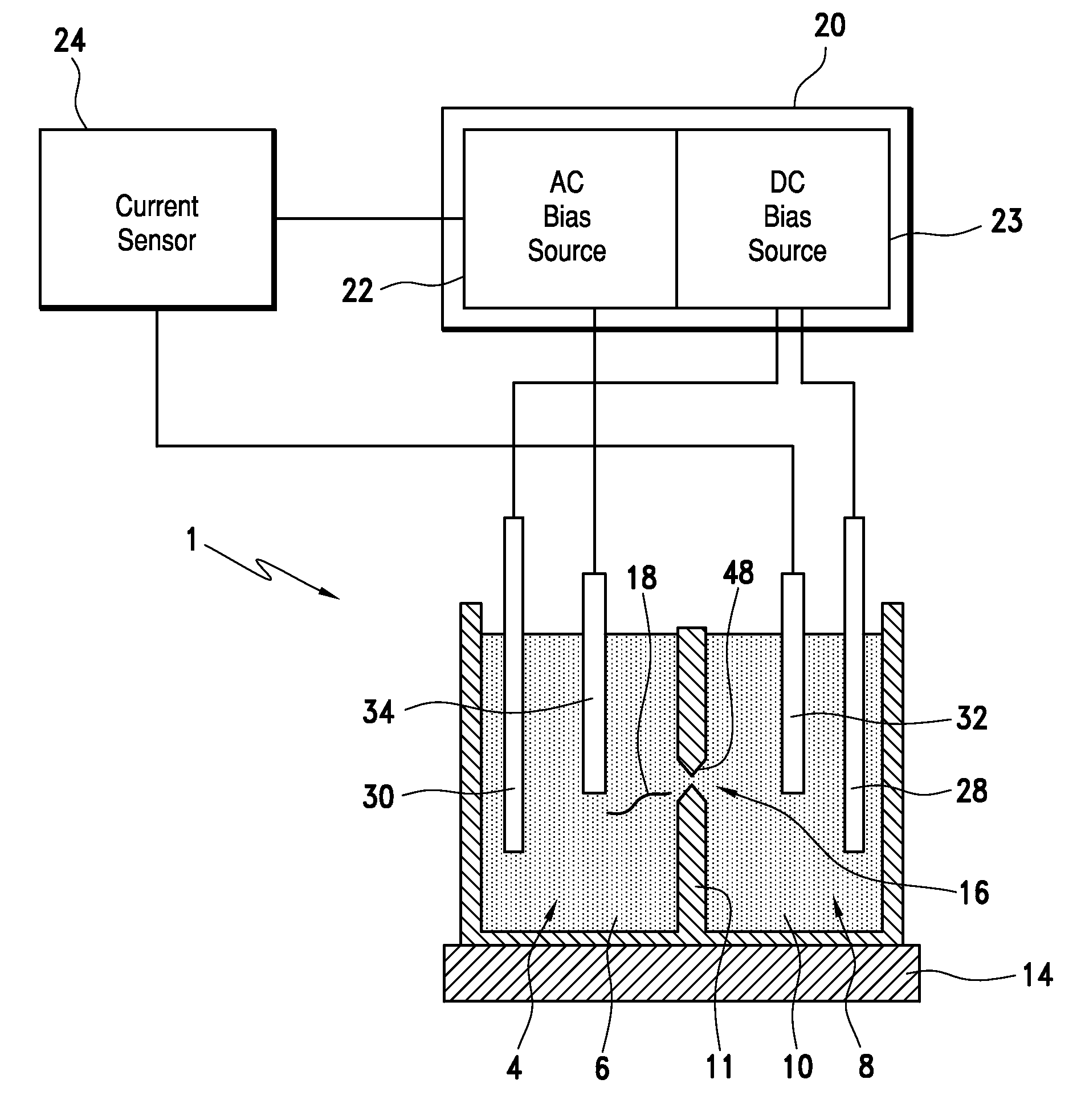Controlled translocation of a polymer in an electrolytic sensing system
a sensing system and polymer technology, applied in electrolysis, diaphragms, electrostatic separators, etc., can solve the problems of inability to achieve the advancement of both designs, inability to use dna hairpins as short strands, and inability to reduce current in direct proportion, so as to improve the spatial resolution of the channel blocking signal, reduce thermally induced motion of the polymer, and improve the effect of channel blocking signal
- Summary
- Abstract
- Description
- Claims
- Application Information
AI Technical Summary
Benefits of technology
Problems solved by technology
Method used
Image
Examples
Embodiment Construction
[0025]In general, the present invention is directed to a method and electrolytic sensing system for controlling the translocation of a molecule or polymer through a channel, in order to measure blocking signals corresponding to individual monomers. With initial reference to FIG. 1(a), sensing system 1 includes a first fluid chamber or electrolyte bath 4 within which is provided a first electrolyte 6, and a second fluid chamber or sensing volume 8 provided with a second electrolyte 10. Sensing volume 8 is separated from electrolyte bath 4 by a barrier structure 11, fluid path connecting first and second electrolytes 6 and 10. In an alternative embodiment depicted in FIG. 1(b), system 1 includes a barrier structure 11′ having multiple channels 16′ therein to provide for an array-type sensing system. Regardless, barrier structure 11 is joined to a substrate or stage 14. In a preferred embodiment, stage 14 is a temperature control stage. In general, system 1 controls the translocation o...
PUM
| Property | Measurement | Unit |
|---|---|---|
| frequency | aaaaa | aaaaa |
| frequency | aaaaa | aaaaa |
| diameter | aaaaa | aaaaa |
Abstract
Description
Claims
Application Information
 Login to View More
Login to View More - R&D
- Intellectual Property
- Life Sciences
- Materials
- Tech Scout
- Unparalleled Data Quality
- Higher Quality Content
- 60% Fewer Hallucinations
Browse by: Latest US Patents, China's latest patents, Technical Efficacy Thesaurus, Application Domain, Technology Topic, Popular Technical Reports.
© 2025 PatSnap. All rights reserved.Legal|Privacy policy|Modern Slavery Act Transparency Statement|Sitemap|About US| Contact US: help@patsnap.com



